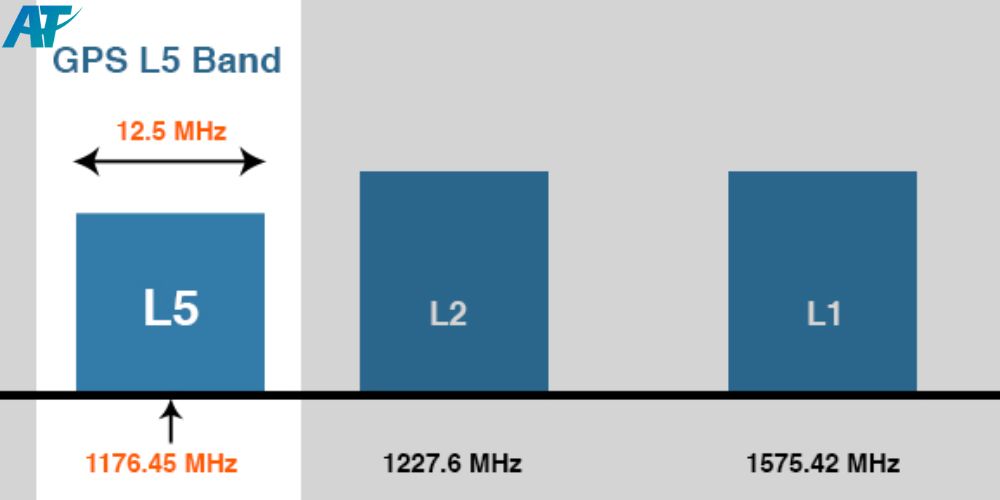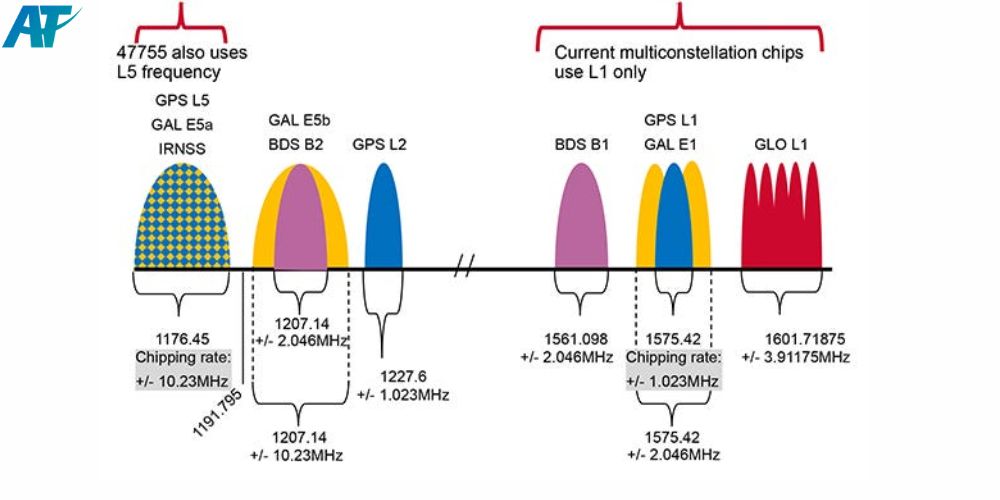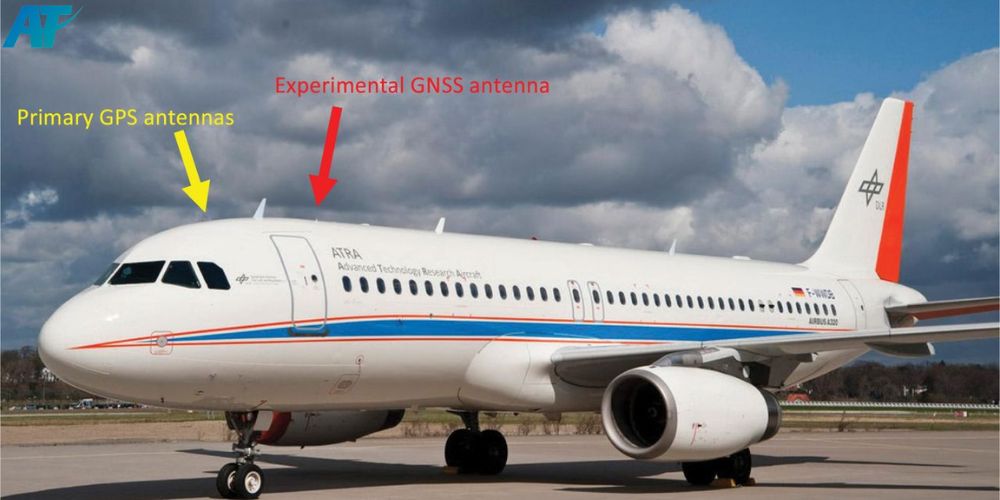Global Navigation Satellite Systems (GNSS) are an integral part of modern navigation, providing critical positioning and timing information to users worldwide. Over the years, GNSS systems like GPS have evolved to offer more accurate, reliable, and widespread services. The GNSS L5 band, introduced as part of the modernized GPS system, plays a crucial role in this evolution. In this article, AT Technology and Consultancy Joint Stock Company (ATTECHSOFT) will explore its key features, applications, and outstanding advantages that set it apart from previous bands. We’ll also discuss why the L5 band is vital for the future of GNSS technology.
What is the GNSS L5 band?
The GNSS L5 band is one of the key frequencies used by modern navigation satellite systems. Operating at a frequency of 1,176.45 MHz, the L5 band is designed specifically for civil and commercial applications. This frequency is part of a new generation of signals, which have been introduced with the modernization of GNSS systems such as GPS, Galileo, and Beidou.
The L5 band is one of the three civil signals introduced in GPS III satellites, alongside L1 and L2. Unlike the earlier L1 and L2 signals, which were primarily intended for military use and had limited civil applications, the L5 signal provides improved performance for both civilian users and commercial applications. The L5 frequency is an advanced signal, offering a higher level of precision and reliability compared to older signals.
One of the primary motivations behind the development of the L5 signal is to meet the growing demand for more accurate positioning information across a variety of sectors, including aviation, transportation, agriculture, and autonomous systems. The L5 band enhances GNSS performance by providing better resilience in challenging environments, improving signal integrity, and offering higher levels of accuracy. These benefits make the L5 band a key part of the future of global navigation.

Key features of GNSS L5 band
Several key features of the GNSS 5g make it a significant advancement in the field of satellite navigation:
Enhanced accuracy
One of the most important aspects of the GNSS L5 band is its ability to provide high-precision positioning. The L5 offer more accurate location information by improving the measurement of signal delays and providing better multipath mitigation. Multipath interference occurs when signals bounce off buildings, trees, or other structures before reaching the receiver. The L5 band features advanced signal processing techniques that help mitigate the effects of multipath interference, thus enhancing the precision of positioning data.
The L5 signal’s improved accuracy is particularly important in applications where millimeter or centimeter-level precision, such as in geodesy, surveying, and high-precision farming.
Higher power and signal quality
The L5 signal is transmitted at higher power levels compared to previous signals. This improvement results in a better signal-to-noise ratio, which is critical for improving the overall signal quality. Higher power levels ensure that the signal remains strong and reliable, even in environments where there are many obstacles or sources of interference. This makes it especially useful in urban areas, deep valleys, or other challenging environments, where weaker signals can be easily blocked or reflected, leading to inaccurate positioning data.

Improved resistance to interference
Another significant feature of the L5 band is its resistance to interference. With the increasing number of GNSS-enabled devices and signals in urban and industrial environments, signal interference is becoming a major challenge. The L5 band reduce the impact of such interference, including jamming, spoofing, and signal degradation. The use of advanced modulation techniques, such as the quadrature phase shift keying (QPSK), allows for better resistance to interference, ensuring that the signal remains usable even in challenging conditions.
Dual-frequency capability
Unlike the L1 band, which was a single-frequency signal, the L5 band can operate in conjunction with other GNSS signals, such as the L1 and L2 bands. The ability to combine multiple signals allows for more accurate measurements of the signal propagation time, which is critical for improving positioning accuracy. Dual-frequency processing, where both L1 and L5 signals help to correct errors caused by ionospheric delay and further increases the precision of positioning.

Advanced signal processing
The L5 band incorporates advanced signal processing features that help improve the overall integrity and reliability of the navigation service. For instance, the L5 signal includes a new modulation technique that enhances the signal’s resilience to both interference and ionospheric distortion. This advanced modulation helps ensure that users can rely on the L5 signal for accurate and consistent navigation, even in the most demanding environments.
Applications of GNSS L5 band
Aviation
The aviation industry stands to benefit greatly from the GNSS L5 band due to its high level of accuracy and integrity. The L5 band is especially important for the implementation of advanced navigation systems in both civil and commercial aviation. The increased precision of the L5 signal is essential for improving air traffic management, reducing flight delays, and enhancing safety by enabling more accurate approach and landing procedures, particularly in adverse weather conditions. The L5 band also plays a key role in the development of required navigation performance procedures and other advanced flight operations.

Autonomous vehicles
Self-driving cars, drones, and other autonomous vehicles require highly accurate and reliable navigation data to operate safely and efficiently. The L5 band’s improved accuracy and resistance to interference make it ideal for autonomous vehicle navigation. By integrating L5 signals with other sensors such as LiDAR, radar, and cameras, autonomous vehicles can achieve more reliable positioning and better decision-making in complex and dynamic environments.
Agriculture
Precision agriculture is another field that greatly benefits from the improved accuracy and reliability of the L5 signal. Farmers can use GNSS-enabled equipment to guide tractors, plows, and other agricultural machinery with high precision, reducing the amount of land needed for planting and increasing crop yields. The L5 band’s ability to provide centimeter-level accuracy allows for better mapping, planting, and harvesting practices.
Surveying
Surveyors and geodesists rely on high-precision positioning to measure land and property boundaries, create accurate maps, and monitor changes in the Earth’s surface. The L5 band is particularly useful in this field due to its ability to provide highly accurate and consistent measurements. Whether it’s conducting land surveys, mapping infrastructure projects, or studying tectonic plate movement, the L5 signal offers the precision and reliability needed for these applications.

Military and defense
While the L5 signal was originally developed for civil use, its high accuracy and resistance to interference have made it valuable for military and defense applications as well. The L5 band can provide additional redundancy for military navigation systems, ensuring that armed forces can operate with high-precision positioning even in contested environments.
Outstanding advantages of GNSS L5 band
- Increased signal integrity: One of the most significant advantages of the GNSS 5g is its high level of signal integrity. The L5 signal includes features such as time-of-arrival information and error-detection capabilities, which help improve the reliability of the system. In critical applications like aviation and transportation, where safety is paramount, the integrity of the L5 signal provides an additional layer of assurance that users are receiving accurate and reliable positioning data.
- Better correction: The L5 band’s dual-frequency capability enables better correction of delays. The ionosphere can cause signal delays that affect the accuracy of GNSS positioning, particularly at higher latitudes. By combining the L1 and L5 signals, it is possible to correct for ionospheric errors more effectively, improving the accuracy of positioning data.
- Support for next-generation navigation systems: As GNSS technology continues to evolve, the L5 band play a key role in next-generation navigation systems. With its high level of precision, improved signal quality, and advanced features, the L5 band support emerging technologies like autonomous vehicles, UAVs, and high-precision mapping systems.
Conclusion
The GNSS L5 band represents a significant advancement in satellite navigation technology. With its higher power, improved accuracy, resistance to interference, and support for dual-frequency processing, the L5 signal offers several advantages over previous GNSS signals. Its applications span a wide range of industries, from aviation to agriculture, autonomous vehicles, and beyond. As the demand for precise and reliable positioning data continues to grow, the GNSS 5g will play a critical role in shaping the future of navigation and positioning services.
Contact us to arrange a demonstration:
Email: sales@attechsoft.com
Website: https://attechsoft.com/
